

Thanks to TK For sharing his daring adventure – an almost 6-month cross-country trip from San Francisco to New York and back with ME/CFS. Traveling is by definition an adventure. We travel to become rejuvenated, to soak up new experiences, to open our eyes newly once again. When we travel we tend to see things more intensely and the world seems fresher.
Travel, though, is not easy. Even healthy people feel a combination of trepidation and excitement as they begin their journey to a hew place. Even when healthy we often return home exhausted and happy to experience the ease and familiarity of home once again.
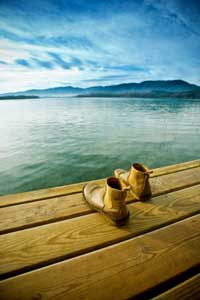
The wanderlust can run strong, though. We are by nature explorers. Perhaps the best known travel account of a person with chronic fatigue syndrome (ME/CFS) comes from Roger’s King’s “Love and Fatigue in America“. King, an Englishman, was felled by ME/CFS when he entered the U.S. and then proceeded to write about ME/CFS and America as he traveled across the country.
Check out an ME/CFS “On the Road” as TK travels, pushes hard, does – as he expects – better than expected and then crashes, and opens up some interesting questions. Plus find some ME/CFS/FM travel resources at the bottom of the page.
On the Road: A Cross-country Trip by a CFS Patient
The crew showed up early in the morning and left with all our furniture. It will be stored away for the next 8 months. What’s left is piled up neatly on the floor of our empty apartment: a bag of rice, a rice cooker and other kitchen items in three boxes, an air mattress, a comforter and two pillows, and two suitcases and miscellaneous boxes filled with my wife’s clothes and shoes. Now I have to roll them out to the curb and load them up in the car. I’ll have to do that all by myself — the wife left in the morning for a modeling geek in the South Bay and I was to pick her up in the afternoon. I am totally depleted after loading two boxes and give up. The rest are thrown in carelessly — I’ll deal with them tomorrow.
Thus started our cross-country trip from San Francisco to New York City and back. Why did I do it? I wasn’t out to impersonate Sal Paradise, for sure. That’s reserved for healthy young people. This was a grand experiment by a CFS patient, and yet another attempt of mine to make some use of a prolonged downtime in my life.
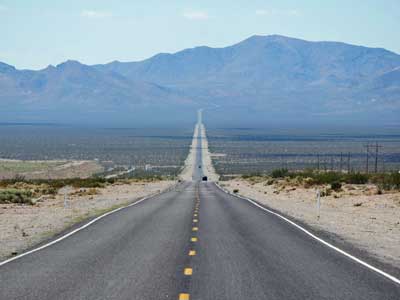
Still, that is an improvement from the early days. In 2010, I felt hopelessly stuck after wallowing in a CFS stupor for 2 years. I was getting out of the house a few times a week even back then, because walking improved my mood and sleep immensely. I’d walk like a zombie for a few blocks at a time and sit carelessly on somebody’s doorsteps to rest.
But between struggling to take care of ADL and aimless walking about in the haze of CFS, I was feeling totally useless because, well, I wasn’t doing anything useful. So, when my sister announced that she was going to Korea for vacation, a country I was born in but haven’t visited in a while, I jumped on the opportunity and hitched on. I ended up staying there for two years. It was like being in Disneyland when I first got there and I was suddenly able to walk more than usual. Then the improvement dissipated when the excitement faded. Same thing happened when I returned back home.
I made the trip once more in 2013 and married someone I had met during the previous sojourn. On the return trip we stopped in The Philippines for a week for our honeymoon. On the last day, we took a day trip to Sumilon Bay and floated around in the water with whale sharks. The return back to Cebu, however, was an incredible ordeal of sitting for up for 6 hours straight on a hard-seated bus driven by a tasmanian devil through the nightmarish Filipino traffic. Next day, we packed up and caught the 12 hour flight to San Francisco. And yet, the day after we landed, I was still up and walking.
This has been happening over and over again. It became clear to me that I was able to get away with more activities when I travel or move to a new place. So I figured, why not take a longer trip and see what happens? Hence the plan for the grand experiment of the cross-country trip to NYC was hatched.
It was a long trip that spanned 10 national parks and a dozen major cities. I can’t possibly recount them all in this article, so I’ll just recount a few that made an impression on my CFS. First, here is route we took:
March 31, The Beginning
The electric car will make sure that I take a break every 2 hours or so. It needs periodic charging and I can take a nap for 30 minutes in the back of the car. And I’ll take every other day off and rest. At least that was the plan. Still, some nights I would wake up and wonder if I’m dooming any chance of my recovery by doing this. Such prolonged activity could make CFS irreversibly worse. But I figured we can always abort the trip and return if I don’t feel up to it. We’ll go as far as Las Vegas and then decide.
Everybody has a plan until they get punched in the face, as they say. We stuck to the plan for a grand total of 2 days. After the ordeal of packing and moving out of the apartment, there was no way I could continue on. So we stayed for two nights in the South Bay and recuperated. Then the plan quickly went out the door by the time we got to Death Valley. We ended up staying only one night in Ridgecrest after driving 400 miles, because, thanks to my cheapskate planning, the motel room wasn’t available anymore. So we drove through Death Valley to Tecopa where we car-camped overnight while charging the car. The next day, we went up Death Valley again and then drove to Las Vegas via Beatty. It was nonstop traveling for 3 days and one thousand miles. And yet I did not crash. It was a sign of things to come.
April 16, 19 hour drive to Austin
The grass is greener in Texas. The rocks and desert of New Mexico gave way to prairie and farmland shortly after we crossed the state line. There was no hill in sight over the horizon. And it must’ve been raining in the farmland. By the time we got to Childress, the humidity was palpable.
After Las Vegas was Grand Canyon via Sedona. On the way, I hit a gigantic pothole near Flagstaff and the car got towed to Tempe for repair. We got stuck in Arizona in a rental car for a week, and I wanted to make up for the lost time. So we decided to go straight to Austin after Albuquerque.
We checked out from Albuquerque Extended Stay America at 7AM. The navigation took us through Childress and Cisco, and it was 200 miles between the two on country roads meandering through millions of small Texas towns. I had to keep it below 55 mph to conserve the battery and make it to Cisco.
We drove and drove through the humid southern night with bugs pelting the windshield and the high beams rhythmically flickering on and off as cars came and went from the opposite direction. A gas station was open at midnight in Stamford and we pulled in to clean the windshield. A few local young people came and went in their pickup trucks. It was as if I was transported back to North Carolina where I spent a part of my teen years. We used to ride the back country road in the middle of the night on weekends with a six pack or two in the backseat, looking for girls.
It was 3AM the next morning when we arrived at our lodge in Austin and the ordeal left a blister on my lip. How strange it felt to have a blister for the first time in 10 years. My wife didn’t understand what it was about. You have to be a CFS patient to understand the wonderment about getting a blister, I guess. And no post-exertional sickness still; I rested one day and we were back in action, touring Austin.
May 4 – 8, Crash in Virginia
By the time we arrived at my sister’s mountain house in Virginia off the Blue Ridge Parkway, we had logged another 1000 miles through the Louisiana bayous and Appalachian mountains. This was the place we planned to take a long break from travelling and do nothing for a week.
My sister and her husband own a few properties here. One of them is loaned out to an Angus farmer named JD. The cows, protected by a pair of donkeys, happily go about grazing on the hillside and suckling their calves and rushing to lick salt off marauding trucks. Down in the ravine, a creek runs through it. We romped up and down that creek for a while the day after we arrived. The next day, I woke up sick. And I stayed sick until we left there 4 days later.
It had been over a month since we left San Francisco and we were running behind the schedule. We should’ve been in NYC by now, according to the plan. And there was nothing much for us to do here. We dined at Aunt Bea’s in Galax one day and visited the Bluegrass Museum the next. Then we were done. I could be hiking the mountains if I were healthy, but walking up and down the hill was out of the question, especially while I was struggling with a flare-up. So we decided to cut the stay short and move on.
Funny thing, I started to feel better once I got back on the road. Could it have been the excitement of getting back on the road? Or maybe it was time for me to recover anyway. By the time we left Wytheville after recharging, I was back in road-worthy shape.
May 15 – 30, Apartment Hunting in NYC
The snow came early in the Sierra mountains in the fall of 1846. One more climb and the Donner Party would’ve made it to Truckee. They had desperately tried to get out of the slippery hole they were in before giving up exhausted and chagrined. They were stuck there between Donner Lake and the mountain for the winter. More than half of them perished.
15000 steps already under my belt for the day and we still had a few blocks to go to Lexington Station in order to catch the Q train back home. Sitting on the sidewalk, I felt desperate, like the Donner Party caught in the snow. The evening rush hour in Manhattan already had started and Uber wasn’t much of an option. After resting for a while, we walked down to York Street to catch a taxi from there. Most were occupied and the empty ones were going over the bridge to Queens. I sat again for a while more to gather courage and then went up to the other side of the block and hailed a taxi there. The driver took us to 63rd station instead. Going to 59th Street station would take longer because of the traffic, he said. I finally stretched myself out and relaxed for a while through the Manhattan rush hour chaos.
I ended the day with 16,000 steps, the most ever in 9 years since I got sick with CFS. And I did not get sick the next day. I was on a 7 train to Flushing for a haircut and grocery shopping instead.
June 9 – 29: Post-trip Struggle in NYC
Been there, done that. It’s been almost one month since we arrived in NYC and the novelty is now fading. My activity has been dropping too, from 60,000 steps a week to 40,000. My crash threshold has dropped as well. Running some errands in the morning and then walking a mile in the afternoon was enough to cause a two day crash.
The post-trip struggle usually lasts 3 weeks. And this one lasted for exactly 3 weeks during which I logged 3 crashes despite the reduced activities. The pace picked up again and I went back above 50,000 steps after that. Then it was time for us to pack up and leave NYC.
8/28 – 9/6, Across Missouri River, Yellowstone to Grand Teton
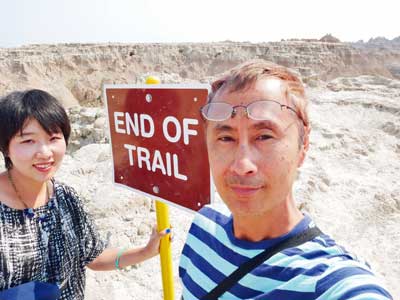
It’s been another whirlwind, traveling for a month through New England and the Great Lakes since we left NYC. We had to speed up after Chicago — it was almost September and we wanted to get to Yellowstone before the weather turned cold. When we got there, however, iIt was in the 90s. With the heat from above and the heat from below, it was Colter’s Hell alright.
From Cody to Belgrade through Yellowstone, it was another 14 hours of driving and sightseeing. We camped in Cody to get the car charged overnight, and that took a lot out of me. I couldn’t possibly continue on after the 14 hour drive through Yellowstone on top of it, so we took a day off in Belgrade. After the rest, we went to West Yellowstone through the park again, and then finally to Teton Village. It was 4 days of travelling with only one rest day. Again, I ended up with a blister on tmy lip, and again I got away without post-exertional sickness.
9/10 – 9/11: Bryce Canyon and Zion
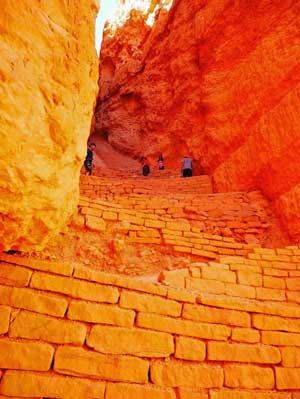
Bryce Canyon was my first attempt at real hiking since I got CFS. The Navajo Loop goes down 600 feet and loops 2 miles through Queen’s Garden. I rested every few switchbacks and made it to the bottom alright. But my legs felt like wet noodles by then, and I wasn’t confident I could make it all the way around the loop. We turned around and went back up the the trail. Down and up 600 feet!
The next day we were in Zion National Park. We hiked from the Temple of Sinawava to the Narrows and then waded up the Narrows in the river. Halfway up the Narrows, we again turned back. This hike was worth about another 2 miles.
9/11-9/16, Crash in Mesquite
This is the town made famous by Stephen Paddock. We didn’t know about it back then; the Las Vegas shooting happened after we were safely back at home. Eureka Casino that he frequented was right across the Virgin River where we stayed. At $27 a night, it was a good place for us to park for a while and rest in the desert heat. So we did that for a week.
I felt fine for the first two days after we arrived. My pace was up to 100 steps per minute and I was walking up and down the stairs to our room on the 3rd floor a few times a day. On the third day, I came down with that familiar heaviness that goes with PEM. I crashed for the next 3 days.
My fitbit congratulated me on climbing 50 flights of stairs when I got back from the Navajo trail in Bryce Canyon. And yet, I crashed after going up and down a few flights of stairs here. How’s that even possible?
9/17 – 9/19, Yosemite and Return Home
There is no elevation gain, the shuttle driver said. But the Misty Trail along the Merced River started to climb shortly after it started and it went on and on. We were planning to get to the Vernal Falls Bridge after about a mile. Another tenth of a mile or so and we would’ve made it. But the trail was getting steeper and my legs were pretty wobbly by then. So we turned around, again.
It was another 17 hour day. We left Mammoth Lake before sunrise and were in Yosemite Valley by 9 AM. We parked the car at Yosemite Lodge and took shuttles around the valley. Misty Trail was our last stop. On the way to Sacramento, the car’s navigation took us through Jackson across Route 88. It is the road I have taken a million times on the way to skiing at Kirkwood. By now the sky was turning dark crimson and silhouettes of lone Oak trees dotted the hilly horizon. It’s scenery I’ve forgotten for 10 years. Will I ever return to skiing? I can only dream about it. It was 9PM when we got to Sacramento. Then we had dinner at a Korean restaurant and were at our lodge after 10 PM.
Epilogue
It’s been six months since we returned from the trip. My days now consist of taking care of ADL, running errands, taking naps and walking to the cafe several times a week. In other words, I’m back exactly where I was before the trip began last spring.
After we returned, we bounced between San Francisco and Sacramento looking for a new home. And then we had to go abroad for a month for my wife’s business. After we returned, I was struck by flu, twice. That was followed by the post-flu struggle for a few weeks. All this post-trip commotion of looking for our new home and attending to my wife’s business prevented me from observing the post-trip health struggle at home. But it did confirm the elevation effect of traveling.
It is true that people tend to become more active when they are traveling. So the activity elevation by itself may not be that remarkable. What’s remarkable is that I was getting less PEM with the elevated activity level. I was walking almost twice as much, yet I was not getting sick; it was only when I stopped traveling that I got sick again. So it seems that the exertion threshold for PEM went up while travelling as well.
Here is the graph of bad days, represented as red vertical lines, overlayed on the activity level in the form of 7 day rolling sums of the number of steps taken:
1) From late March to the beginning of May, there is no red line. This was when I was moving out of San Francisco and traveling to Virginia. Then, 2) thick red lines appear in early May when we took a break in the Virginia mountains and I crashed. After that, 3) lines get denser as we approach July and the novelty of NYC faded. 4) Lines disappear again in August when we got back on the road, till we got to 5) Mesquite where I had another crash. The trip ends shortly after that. From there on we bounced between San Francisco and Sacramento, 6) travelled abroad, then settled in Sacramento in November. The real thick period around January was when I had bouts of flu.
As for the reason why the exercise tolerance goes up while traveling, I can only speculate. Could it be the hypothalamus, the brain’s sleep-alert center that also controls ANS, homeostasis and fatigue, getting stimulated and loosening the CFS brake? Is it all psychological? It’s only an anecdote of one person for now, so it doesn’t make much sense speculating too much anyway. It will suffice to say that this trip was a part of my effort to understand my CFS and climb out of the hole that I’m in. It is an effort that we CFS patients are intimately familiar with: we try anything and everything under the sun, only to hit the wall and drop like a fly. Then we get up and do it all over again. We are a determined bunch consumed with finding a way out of our prison that is CFS.
I’ve certainly had my share of failures. Early on when I only had a vague idea about CFS, I went on a bike trip. The next day I woke up dazed. My condition got progressively worse throughout the following months, eventually culminating in a fainting spell. I wouldn’t be here today if it weren’t for my tailbone that took the blow of my fall and spared my head from hitting the travertine floor of my bathroom. And then in 2009, I decided to give Telegraph Hill a try. I did because, back then, I still believed that I might be able to exercise my way out of the predicament. I spent the rest of the winter lying in bed contemplating how to end it all. It’s that kind of memories that stops me from pushing further when my legs become wobbly. So, if you get tempted to point to my trip and say “see? CFS is all in the head”, don’t. Unless you mean by “head”, the brain.
Anyway, I probably won’t have to worry about my trip inspiring other patients to do the same. Any outdoor activity, let alone travelling, is not an option for severely ill patients, obviously. Even if you are moderately ill, extended travelling is no doubt a high risk endeavor. I’m lucky enough to struggle for a few weeks and recover, but you may not; it may set you back irreversibly instead. So the usual disclaimer and warnings should apply: your mileage may vary (no pun intended); use extreme caution, stick to your usual limit and pacing strategy, and consult your doctor before doing anything out of ordinary, etc, etc. There are plenty of advices on the Web about travelling with CFS if you decide to travel.
It’s now April and the days are getting longer and warmer. My condition tends to improve during the summer, like in 2016 when I could suddenly walk twice as far for no apparent reason and that nagging need to lie down went away. It was enough for me to imagine that I was recovering. But the improvement faded away over the ensuing months and I was back to where I was before. Will the improvement come back again? Maybe. And maybe it will stick around for good this time. Meanwhile, I’ll have the memories to keep me going in the dark days of wallowing in the deep end of CFS. These reminders of what’s possible will keep me going until I recover and do it again, as a healthy person the next time
Travel Resources
- “Road Trip! Me, River, Skye and the Big Yellow Van“. Cort and his two dogs on a cross-country trip right now.
- An ME/CFS Traveller on Tips for Travelling with ME/CFS and/or Fibromyalgia
- Tips for Traveling to a Medical Appointment
- Tips for Traveling if you are a ME/CFS or FM Patient
- Traveling With Fibromyalgia & Chronic Fatigue Syndrome
- Flying with ME/CFS: My Top Tips


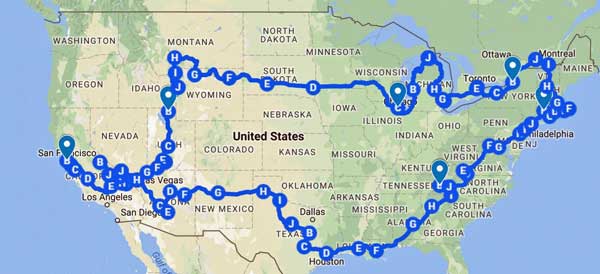
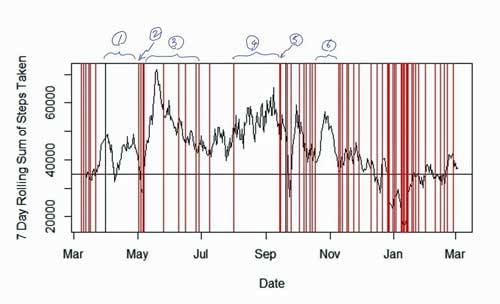

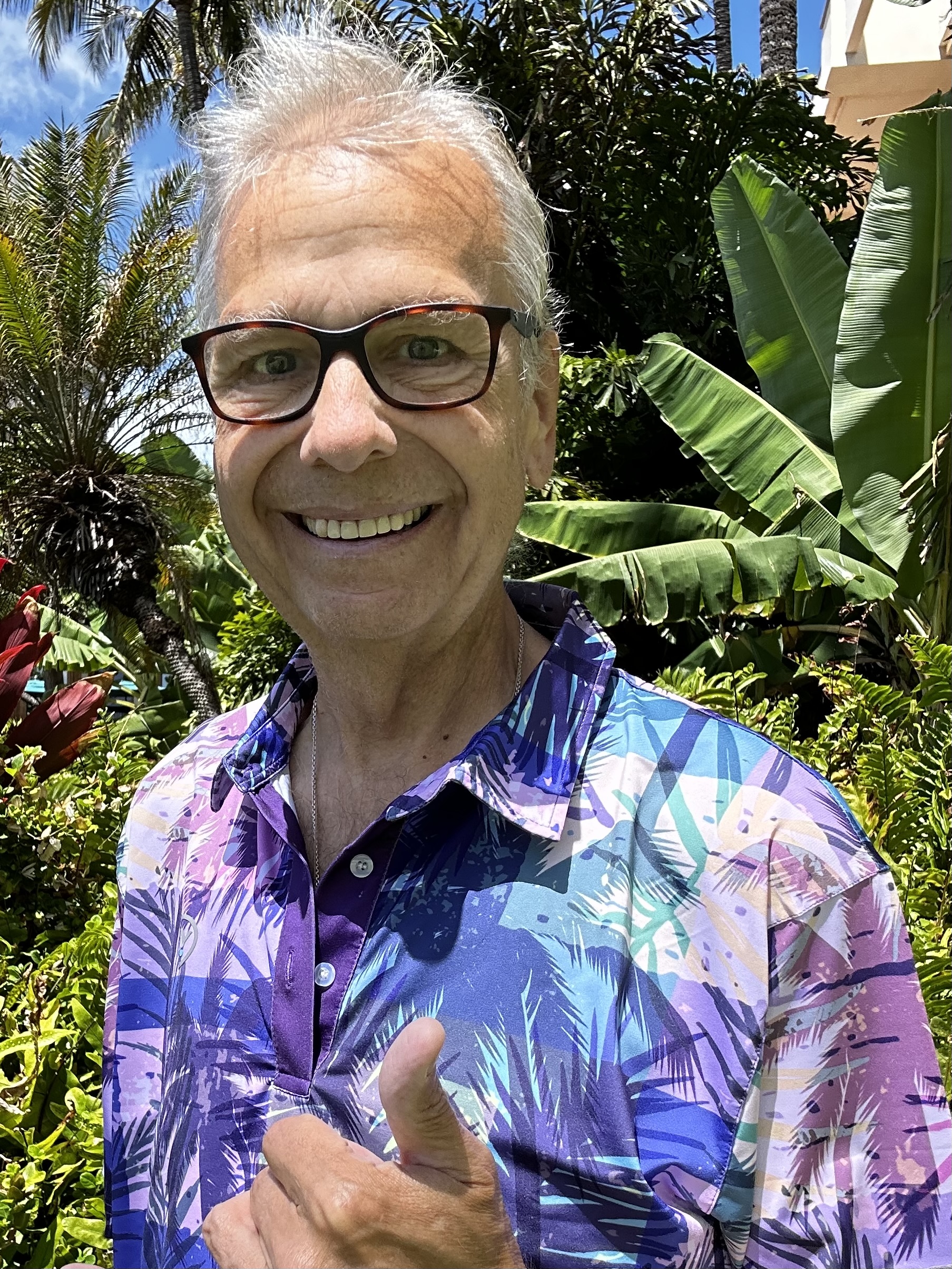

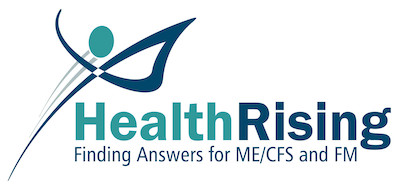
This is fascinating, TK, as I have had similar experiences and have not read any accounts comparable to mine before. I have been diagnosed by Drs. Peterson and Klimas as having ME/CFS.
In my case, a long awaited and risky (CFS-wise) 2-week trip to New Zealand resulted in a major PEM crash 5 days in. I was put in a “push comes to shove” situation by the agonizing thoughts that I had ruined the trip for myself and my two travelling companions. I crashed in bed and spent the night in physical and emotional misery. We had booked a flight for the next day from North to South Island and I decided we would be on that plane no matter how awful I felt. Much to my amazement, I was much better the next morning and quickly recovered from the PEM (in less than 24 hours vs. the expected week or more) in spite of travelling that day. I successfully completed the rest of the trip and then found to my astonishment that I was MUCH better after I got home. Over several months I went from my pre-trip state of being unable to grocery shop or walk further than to the mailbox and back, to shopping with ease and walking almost 2 miles every day. Unfortunately I didn’t listen to my body, pushed this too far, and found myself reduced to being flattened by walks longer than ¼ mile.
So I went on another trip (10 days duration; southern Utah), hoping for a repeat of the “New Zealand” effect. I was planning to deliberately set off a PEM episode, but one occurred naturally on the second night of the trip. The next day we went ahead as planned to Canyonlands National Park. The only way I was going to see those fantastic canyons was to repeatedly walk 1-2 blocks out to the numerous lookout points. This turned out to be fine and I was able to work back up to walking about a mile every day after I returned. Not as good as before, but still much improved.
I’ve gone on one more trip since then after a weeks long setback in my walking distance following walking too far in hilly terrain. I deliberately set off PEM the day before our trip with a long walk. Even though the trip was short (4 days), it went well and returned me to walking about a mile every day after we returned.
I believe this phenomenon is due to putting myself in situations where I know I must keep going in spite of PEM. Somehow this seems to set up a scenario where my system finds a way out of the PEM crash and resets the threshold above which my system goes haywire.
The big question, I think, is how to recreate this situation in normal non-travelling life. I’m retired and well off financially, so this travelling fix is much more available to me than to most people. And, of course, this sort of thing totally doesn’t work for a lot of patients who, in spite of job or daily living pressures, just get worse pushing through PEM. I debated at first whether to post about this at all, but was encouraged to do so by ME/CFS friends as a way of giving other patients hope, if nothing else.
I hope your next trip will have a lasting post-trip effect. It can happen that way- I’m living proof of that, 2½ years later.
I posted about my experience a couple of years ago in HR Forums recovery stories:
https://www.healthrising.org/forums/recovery-stories/mostly-recovered-from-me-cfs-after-22-years.376/
Ha, I’m glad to hear that someone else had a similar experience. It sounds it worked even better for you. I was rather disappointed, I must admit. I wasn’t expecting it, but I was hoping the improvement would stick.
Any case, you are exactly right. Traveling is something that may not work for most of the patients, either because of the resource constraint or because it only makes CFS worse. I was a bit hesitant to write the article too, but decided to share it at the end. Maybe our stories will give the researchers an additional clue. If the elevation effect is universal enough, that is.
thats great fior you. I would try to figure that out if I were you. Have you been dignosed by a specialist in the cfs field? I wonder if you can tell us some of your diagnosed biomarkers please? very interesting. I think poewer of mind has been proven in medicine. That being said my me/cfs is very severe and progresive just hearing it makes my pem come on. lol no seriously i cant even drive an hour without crashing. what to say about flying. great news for you. hopefully will have treatments soon. best wishes
Thanks Jimmy. My process was no different than any other patient’s: matched the criteria, did a battery of test and then decided that it was a CFS when nothing turned up. No biomarker. Take care of yourself, I know how it is to be severely ill.
I haven’t traveled yet since my disease got really bad but I can relate to some experiences in some comments:
* Fresh clean good quality air does a lot, relatively speaking. I live in a new house with very little mold as far as I know, but the amount of chemicals in a house is high and one has to live in a very polluted area to have cleaner air inside then outside the house.
* Another thing I get from light work (it must be doing something, see comment later) in the garden. It’s one of the easiest jobs there is for me. Like sitting on a small bench and pulling weeds out of the ground. Slow, in a good position to not have to bend much and low strength required. My idea why it is so good to me? Green stuff in the garden asks very few of the visual part of the brain. The brain “knows” none of it will bite or run into me. When looking at grass or a shrub individual leaves are unimportant, so “processing” the image as a nice green blur that looks pleasant is sufficient. No need to recognize individual leaves or much objects in it apart from some big weed being sufficiently different. And as it won’t run away my brain has time.
When comparing that to most beneficial travel experience discussed here: they are all “panoramic view” experiences. (Almost) everything happens at a far distance so that to the brain everything looks moving slow and is far enough away to be safe. And green fields, yellow desserts, blue sky and blue lakes are easy on brain processing power. Wouldn’t try that driving downtown New York or walking center Tokio!
* Focus is bad. Focus is good. I mean: focus can cost far too much energy to our brain and crash us. But focus also can “streamline” our thoughts and remove “waste thoughts”. Researchers have seen that ME patients brain often are “all over the place”. When doing a simple task plenty more brain regions are activated then with healthy persons. I think that may be in part because our brain can’t keep up with the speed and decisions (safety related like “is that a car coming from the right? is it on an intercept course on the cross section?…) it needs to make. And once these areas are activated they let pop up lose thoughts. I wouldn’t be surprised if all who experienced such beneficial travel had a sort of deep/undeep focus without effort (relatively speaking). I mean far less stray thoughts then usual or during rest while still not having a focus “depth/effort” like trying to recall a name. I’d not call this power over mind but streamlined thought. If it’d be that it would be quite tricky to make it long lasting as we have a nasty habit to overdo it if we feel it could help us.
* The last thing that comes to my mind is adrenaline too, but I’d put more weight on the first three ideas. Adrenaline can improve an ME patient over time IMO but it requires *very* specific circumstances to work. I believe one has to have both the appropriate body chemistry, an environment to long time control stressors well, skills to manage stress well and have very few to no emotional upsetting experiences nor memories even not suppressed ones. Though conditions.
My understanding as to why ‘things get better’ especially at first with traveling and with new experiences) is that you are creating new neuropathways. I took a brief course a number of years ago which explained that new neural pathways are created within the limbic system which somehow (which I really don’t know) cause you to feel better at least for a time. Neuroplasticity.
I’ve noticed being able to do more than expected when travelling in myself and others. Not a tremendous amount more but more. No comparison at all to being healthy! Not to say either that crashes aren’t common.
I experienced this recently. On a cross-country trip from Las Vega to Miami I bedded down in New Mexico. I was fluey – something I’ve been experiencing more and more – and something I was worried and dreading on the long trip. The next day I got up and we got off and I had my best day.
Now here I am in Florida – on a rest day – and the fluiness is back. Go figure. The truth is is that for me, it’s really hard to know what will happen. Sometimes pushing it works and sometimes it doesn’t.
Yeah, it’s hard to tell what works, or if it works at all, without a controlled trial and enough data. Each of us have to find what works for us through trial and error, I guess. It’s the walking speed that has proven to be the killer for me — taking just a couple more steps per min makes difference — so I consciously make sure I walk as slow as I can and take frequent rests while travelling. Driving seems to be safe though.
Take care of yourself, and good luck with your trip!
I love how you track your steps during the trip. I know somebody else who did that and her steps went up significantly while traveling. Again, this is not to say that she was well at all. She was still very very functionally limited – couldn’t do nearly what a normal person would do – but her steps did go up.
I have experience the same thing during vacations and events that excites me. I was up and down 4 flights of stairs at hotel for a week without energy crash. I was even swimming every day. I did find walking on the beach was too much for me.
Thank you for sharing.
Thank you for reading, Sandy.
Is it possible that the immune system refocuses on “new” microbes it encounters during travels? And then after familiarizing and not finding threats, puts its energy back into whatever it had been doing to the body?
I have taken day trips and felt better but often crashed sometime after returning. I wondered why the improvement and thought maybe I just had more adrenaline flowing when out and about.
Anything is possible, I guess. The post-trip struggle is real for me too, though I don’t know if it is adrenal or not. Even some healthy people suffer from the post-trip blues which is thought to be a depression. Personally, I think there is more to it than that.
I think that’s an interesting theory. I hope a researcher pays attention to it.
My wife (ME/CFS sufferer for about two years officially) and I had plans for this year, to drive out to the canyons and arches. Those plans were canceled due to the fear of bad crashes during the trip. I liked reading how you had time to recover from crashes where we didn’t have that time to put in the plan. I have promised her that we will get out there someday.
Well, I hope you guys make it, Kevin.I had the same fear but I figured I could always abort. And yeah, it’s important to add some slack just in case, even if it doesn’t go according to plan 🙂
I believe environmental factors come into play for those of use who are relatively high-functioning (or perhaps even for those who are housebound ????).
Whenever I used to go for a walk in the local gardens, beach or away from houses, crowds and pollution, I was generally invigorated and used to walk slowly for hours (this lasted approx. 5 years after I had to quit working due to pain, fatigue, memory & cognitive dysfunction in Feb 2010). I always felt worse indoors but couldn’t quite pin down the exact reason.
The end of my working life was exacerbated by (inherited) severe obstructive Hypertrophic Cardiomyopathy (diagnosed around 2011) and debilitating pain from a teenage spinal condition (which was never diagnosed or treated) as well as FM.
Then I had to move apartments in May 2015 and rapidly went downhill some months later (from the move and the work of packing??) and had further spinal surgery as more bulging discs popped out and compressed the nerves.
Interestingly enough, when I went back to my old cold, dark, un-renovated apartment to let the carpet cleaner in to dry-clean the carpets as a condition of my tenancy, I was staggered at the smell of damp & decay. I literally couldn’t breathe and had to wait outside. I had lived there for 15 years with slowly deteriorating health (but now know I’m allergic to mould). Then I had to move 20mths later in Oct 2016 as the first move location was not suitable and the rent too high to sustain for any length of time (living on a frugal Disability Pension).
Note: I had to move 3 times in the last 20 years of my working life due to floods, leaks in the roof and the landlords unwilling to fix the problems. How unlucky was that. The apartments looked all right when I first inspected them and took out leases.
Due to other factors….severe disc and spinal complications with severe daily headaches, sometimes migraine level (for the last 18months), I’m back to worse than when I stopped work today. I’m heading towards a potential 3rd back surgery, as its too painful to walk with my level of sciatic pain at the moment so I’m housebound pretty much, but I STILL SAY fresh air in the right environment and a slow paced level of walking with the right diet, supplements and/or medication is key for us mild to moderate CFS/FM sufferers. I have MCS and a lot of food intolerances (or allergies) too. None 35 years ago (that I remember).
I still believe if you get out in the fresh air in an environment suitable for your particular need, be in tune with your body, listening to when its warning you to stop and rest, you can improve your symptoms a certain degree.
In my case, a kidney tumour has disappeared, my (heart) HCM has been downgraded from severe to mild (i.e. my physical heart is now coping really well with limited blood flow through the obstruction and at this stage I don’t need heart surgery). Slow deep breathing improves my oxygen saturation and high blood pressure. Strict Paleo Diet improves my cognitive function and pain levels. If I eat Dairy or Grains, I go downhill within about 20 minutes and the deterioration lasts for about 5 hours. If only my spinal condition has been diagnosed and treated in youth, I would be far better off today. I still get constant sore throats, but last Easter was the first time I had a real cold/virus in years……maybe since I stopped work…..I can’t quite remember. I came down with it the day after I went to the local shopping centre to do some pre-easter food shopping. I believe cold/flues are absent because I don’t work or mix in public places. I keep my interaction with the outside world to a minimum. My visits to shops and public library to an absolute minimum.
Living Mindfully and not allowing my thoughts to veer into any negative patterns or stressful situations helps too. Having goals or challenges in my Photography hobby keeps me looking forward, not backward.
I was diagnosed with FM in May 2006 (and probably CFS concedes my primary care physician) after 26 years in pain. I have the further complication of (inherited) HCM from my Mother’s side of the family and Diabetes (from the females in my Father’s side of the family), but I have been in Diabetes remission since early 2015 due to diet alone.
I wonder, TK, if environmental factors had an impact on your varying symptom improvement and decline? Were you able to make any connections between the air quality/environment and your crashes while on the road?
The Mind is very powerful. I wonder if the whole idea of an adventure helped in some way? Even though you had crashes and PEM, you still kept going. There must have been a small part of your brain that said I CAN DO THIS.
I WILL DO THIS (road trip).
I WILL TEST MYSELF (despite the repercussions).
Many would have turned back and come home. The very fact you (and your wife) continued on the journey, despite the setbacks, is a testament to the Power of your Mind.
Thanks for the long comment, Vicki :-). And no, I can’t say I have noticed environmental factors. But I did struggle for two weeks after a flu shot a few years ago. I did some search and found a paper that said flu shot creates low grade inflammation. So I wouldn’t be surprised if some environmental factors make your condition worse.
I find this whole ME/CFS/FM condition a mystery as there’s so many different subsets or degrees of disability. So many symptoms, that may, or may not, relate to other conditions too.
I suppose it’s the same for any serious health condition. Both my brother and his wife have had cancer, but they are well now. They don’t understand the concept of being in pain and exhausted for most of the last 37 years (and being in serious pain 24/7 days/weeks/months/years for about 18 years of that time).
I was interested in your story, particularly as you seemed so much better when travelling.
The only reason I am functioning so well today, is that I don’t do anything that I know will make me worse.
But compared to a healthy person, my energy envelope is about 4-5 hours. Some people think I’m exaggerating, but if they stayed with me for the week, they would see I do very little during the day and have frequent ‘breaks’.
Vicki,
Your environmental & diet experiences parallel mine. Recently in a new house the whole house AC went down & I had to install an old window unit. It smelled hugely moldy & within days I was hugely sick & with first ever true migraines: auras, blank spots in vision, etc. Got rid of the window unit & I was better within a day. Never knew the mold connection was real for me.
Now I realize that when I go out & feel better it’s not all psychological, but that even this new (old) house probably has mold in the whole house duct system. Less headache & no auras, but head does feel better when I leave the house. Who woulda thunk?
I always thought that since I didn’t usually dramatically change in a moldy environment, that mold wasn’t an issue for me. This experience was a great diagnostic. Now I know that mold is constantly causing low level symptoms that probably influence the whole picture. I need a new house—hahaha. If only . . .
Terry,
I agree that your experience is like mine. I live in a (rented) new modern apartment now, but continue to get severe daily headaches AND feel so much better outdoors. In winter the condensation (despite reverse cycle heating) collects on my windows during the night and runs down the glass. I have a theory than this may have happened before with previous tenants and although I can’t see it, there may be mould where the carpet meets the wall.
Every afternoon, where I sit at my desk facing the floor-to-ceiling windows, I fall asleep and ‘pass out’ for a couple of hours, but this never happens when I’m out of my balcony in the fresh air (or when I used to go outdoors for a walk).
It’s a nightmare for me when I have to go to the nearby shopping mall for something. The noise, bright lights & perfumes make my headaches so much worse to the point where I have to leave……sometimes shopping unfinished.
This reminds me of how many people went on mold or toxin avoidance sabbaticals. Something to note – successful avoiders have said that the San Francisco area makes them feel the worst and Virginia (or maybe it’s West Virginia) isn’t far behind. Maybe there are particular pollutants that set off flares in those locations. A great resource for more info along these lines is paradigmchange.me. Thanks for chronicling your trip TK.
Thanks for reading, Gail. Interesting bit about SF and VA, though I improved over the years in SF and moving to Sacto didn’t seem to have changed anything. Mine seems to be almost purely correlated to exercise and emotional stimuli. I understand though, some people are sensitive to mold, etc.
so i wish everyone the best. I think its great to have hope and find anything that may help. there are some things in life that seem to make us all happier and we can;t separate the mind from the body. that all being said this is most likely a syndrohme. We have to look at biomarkers that we can identify at present time. there are many although different for different subsets. we have to remember to be careful as we speak of mental fixes. there are many unknown factors for sure in this disease. there are also many biomarkers that we can point to. we are treading a very fine line and need to be scientific all the time as that is the only way forward. Hope is great. the only way to help in short and long run is to show bimarkers and check afain to see if anything has changed. I did not mean to go off thread i am sorry. that all said we must as a community work with the science we have that show spec ific biomarkers that we can point to so as to be taken serioiusly moving forward.
I have the exact same experiences while traveling. We went to the Southwest last September for a 10 day vacation. I live in NC so it was not a direct flight and one thing that exhausts me is airports and plane rides.
We made it to NM and spent the next 10 days traveling around some of the National Parks. We hiked down to the cliff dwellings…walked in Monument Park…Grand Canyon..Death Valley..Hoover Dam..Sedona and ended up in Las Vegas ( left three days before the shooting.
I only had one day where I was feeling crashed so I spent that afternoon at the condo resting. The next morning I still wasn’t great but we had to move on and drive to Hoover Dam. By the time we got to Vegas and stopped at In-n-out Burger I was feeling better and excited to be having my first burger.
I can say I slept better …felt better in the mornings and never dragging or fatigued feeling during the days. I kept to my normal schedule though by being back at the hotel or condo by 3pm and resting until dinner. We only went out once after dinner because I wanted to play a slot machine and see the Vegas strip at night.
I have also been to Hawaii several times in the past five years and even thought the flight is 12 hours I am always ready to go the next day. Once we get home from two weeks in paradise and recover from jet lag I feel better for a while.
I have no idea why I do well on vacations either…I have I would call it moderate CFS. I can’t work anymore …drive distances…shop much or socialize.
We are going to Kauai in September and I hope I do as well…
Looks like the anecdotal evidences are piling up:) Good luck with your trip!
Thanks for your story TK. I’ve been wondering if the adrenaline of a new experience helps in resetting the brain for a time. I just moved to a new (old) house and even though I’ve eventually reverted to my old levels of energy (and now suspect that mold is part of it) I was truly different & able to do more for a good month. I’ve had that experience before—-last year when I needed a storage unit cleaned out and the terror of a deadline pushed me forward. I don’t understand the hormones & chemistry of it all, but dire necessity, vs daily grind, does seem to make a difference for me.
Yeah, I don’t understand much either as I’m not a scientist. But it could be the new experience itself that is stimulating the exercise tolerance. The flight-fight response to stress starts from the brain too. So, the neurology could be effecting the threshold before the endocrine change takes place. Anyway, all speculation.
Terry, your comment very closely describes my experiences over the years. Although as a note of caution three years ago I decided to intentionally exercise vigorously for 90 seconds a day (as a small prememptive against Alzheimer’s for which I carry a gene.) On the morning of the fifth day I woke up quite crashed. To my great dismay I have not recovered my original energy level and my CSF remains at a level of 5-7. Previously I was a 2-4 and could carry on life fairly normally. Notably, this sudden decline was after 32 years of being essentially a mild case. Now I am extremely careful about energy expenditure over successive days for fear of a worse decline which would result In my being house-bound. And yet, just as before, on any given day (or two) I can still summon more energy in a crisis or new enterprise than I could otherwise. I wonder too if adrenaline or cortisol temporarily resets the brain.
Maybe part of it could be the anti-inflammatory (and immune suppressing) properties of both adrenaline and cortisol.
Many researchers believe fatigue is at least partially a side effect of inflammation. Interrupting inflammation could therefore potentially interrupt fatigue. When inflammation has become auto-inflammation that may resemble to a temporary partial reset. Strongly suppressing inflammation longtime unfortunately has severe side effects. Adrenaline and cortisol both increase metabolism too.
Adrenaline is a super strong anti-inflammatory medicine IMO as it is the utmost effective medicine in anaphylactic shock https://en.wikipedia.org/wiki/Anaphylaxis “The primary treatment of anaphylaxis is epinephrine injection into a muscle, intravenous fluids, and positioning the person flat.”
Cortisone https://en.wikipedia.org/wiki/Cortisone is closely related to cortisol and “A cortisone injection can also be used to give short-term pain relief and reduce the swelling from inflammation… …Cortisone may also be used to deliberately suppress immune response… …The suppression of the immune system may also be important in the treatment of inflammatory conditions.”
Cortisone was once heralded as a wonder medicine, unfortunately it’s side effects when using long term proved equally big. Adrenaline looks a lot like cortisone/cortisols big nasty brother…
That’s an interesting theory. Maybe someone can test that by using prednison before/after excercise. Come to think of it, I’ll bet someone tried it already. There are few we havent tried already :]
I’d like to ad that I no longer try to suppress inflammation. Inflammation is primary a healing mechanism, a bit like fever. I’d far more prefer to find and remove the trigger causing inflammation.
Even in auto-inflammation diseases there may be a constant trigger present. Suppressing inflammation then would not only suppress the vicious-circle type of inflammation but also suppress defenses against the supposed trigger.
Consider it a bit like having a mild allergy against peanuts and using immune suppressing drugs to allow you to eat them without anaphylactic shock.
While it’s clear that I won’t promote the idea to try to abruptly disrupt inflammation I’ll ad that I believe that any such attempt should at least be followed by a prolonged period of even stricter pacing then before in order to give the body a change to repair damage in spite of probably too few inflammation. I imagine most ME patients would do the reverse…
Hi, I found another angle on increased adrenaline and corticosterone (and testosterone in one go!):
* Heat Shock Protein (HSP) play an important role in handling all sorts of physical stress https://en.wikipedia.org/wiki/Heat_shock_protein: “…such as infection, inflammation, exercise, exposure of the cell to toxins (ethanol, arsenic, trace metals, and ultraviolet light, among many others), starvation, hypoxia (oxygen deprivation)… …or water deprivation.”
* HSP help protecting against many of these stressors by either binding to them or help in refolding or degrading faulty proteins.
* HSP may be involved in pain sensation (FM) as I read somewhere that presence of increased HSP act as heat sensor for the nerves and heat does cause pain sensation at the nerves
* HSP relates to fatigue in Sjögren’s syndrome http://journals.sagepub.com/doi/10.1177/1753425916633236: “Plasma concentrations of HSP90α were significantly higher in patients with high fatigue compared with those with low fatigue, and there was a tendency to higher concentrations of HSP72 in patients with high fatigue compared with patients with low fatigue… …Thus, extracellular HSPs, particularly HSP90α, may signal fatigue in chronic inflammation. This supports the hypothesis that fatigue is generated by cellular defence mechanisms.”
* HSP expression is increased under conditions of environmental stress with higher levels of adrenaline (aka epinephrine), corticosterone and testosteron (lower incidence of FM/ME/auto-immune disease is men versus women). https://www.researchgate.net/publication/40620453_Epinephrine_induces_72-kD_heat_shock_protein_HSP72_in_cultured_human_fibroblasts: “HSP 72 was induced strongly and rapidly after epinephrine treatment” and https://www.researchgate.net/publication/45949114_Involvement_of_Steroid_Hormones_Corticosterone_and_Testosterone_in_Synthesis_of_Heat_Shock_Proteins_in_Broiler_Chickens “The exogenous testosterone and to a lesser degree, corticosterone, stimulated the expression of HSP in heat-stressed capons. The results suggested that the steroid hormones, testosterone and corticosterone, are involved in the expression of HSP, which are associated with acquired and maintained thermoresistance in domestic chickens.”
* There is also a relation between HSP and cortisol https://link.springer.com/article/10.1007%2Fs11626-014-9774-x: “From the results, we concluded that the cortisol increases Hsps expression in the co-cultured C2C12 and 3T3-L1 cells, which is differed from one-dimensional mono-cultured C2C12 and 3T3-L1 cells.” but I must admit some research seems to offer potentially conflicting data for the link between cortisol and HSP (too technical for me to determine if it is a actual conflict).
I wonder if a small part of it may have to do with the level of activity we sustain at home without realizing it. I “improved” immediately when I moved in with my sister because keeping my own house kept me doing lots of little things that I didn’t pay attention to and often didn’t show as steps on my Fitbit. Like standing at the stove prepping a meal and then washing dishes. But they used up my energy nonetheless, and eliminating them left me with more energy for other things. Similarly, we leave many of these activities at home when we travel and may just not notice them.
But ME/CFS is a crazy thing, so there’s no telling what the change in environment may do for us.
That’s a good point, Beth. Energy spent on ADL is energy not spent on walking. Tho, I usually register 3000 steps when I’m home just taking care of ADL. Washing dishes register several hundreds, probably from the arm movements.
FYI ‘Fitbit Was Recalled Due To Mysterious EMF WiFi Symptoms, Complaints Mounting’
drleonardcoldwell.com/fitbit-was-recalled-due-to-mysterious-emf-wifi-symptoms-complaints-mounting/
‘…A compelling article links mysterious EMF-related symptoms like rashes, erratic pulse, nausea, pain, headaches and dizziness to Fitbit.
This writer began to have suspicions about health symptoms after receiving one for Christmas. I reasoned within myself that the extra activity would keep me away from other EMF stations in my life – the smart meter, my computer, Router WiFi, and my phone. That has to be healthier, right? Then again, if cell phone instruction manuals warn to keep the phone at least one full inch from your body at all times…why would wearing the radiation against the wrist be okay?…’